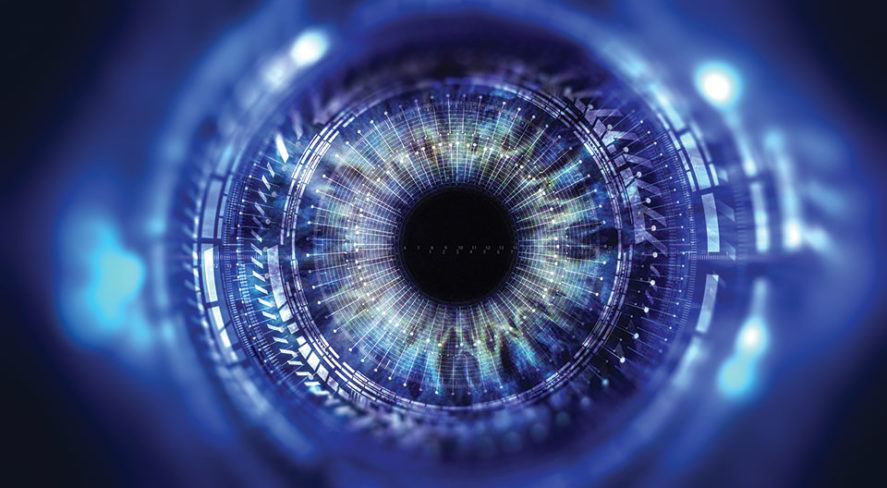Solving Business Challenges With Computer Vision: Artificial Intelligence Technologies Will Soon Be Transformative


Alan Turing is considered to be a founding pioneer of artificial intelligence (AI), dating back to the 1940s. The role of AI, in particular computer vision, has dramatically increased since then, in part because of the overwhelming amount of digital and visual data in our daily lives.
Computer vision is one of the most advanced fields of AI and involves applying machine learning (ML) models to digital images to identify and label objects and events. This can deliver significant insights into any data captured through any visual medium. Through computer vision, AI can use the “identified” ML data to perform advanced analytics, make recommendations, and deliver insights to make businesses more efficient.
Today, organizations are challenged to increase their ability to perform analytics on large amounts of data. Coupling the inherent “eyes in the sky” nature of surveillance with AI algorithms to identify anomalous events can deliver real-time remediation and produce intelligence and analytics that can transform an enterprise’s security, safety and business operations.
The Evolution of Smart Surveillance
Video surveillance is a mainstay in many industries, from retail to health care to hospitality to corporate offices. Name an industry and surveillance is probably present in some shape or form. It goes without saying that ensuring the highest level of protection and security is vital. Surveillance can “up the ante” by utilizing the analytic features of AI technologies to deliver insights that can improve operations and reduce risk, while getting the highest return on surveillance investments.
Taking the retail industry as an example, instead of having a staff member monitor a multitude of cameras, AI algorithms can automatically identify when a meaningful incident occurs. Imagine if a supervisor could be notified of a long queue in one of the check-out lines. Or store security alerted to a theft as it is occurring. Or a manager informed instantly of a slip and fall so that it could be quickly addressed and documented. Broken merchandise or boxes blocking an aisle could be promptly detected. A potentially dangerous event involving obstructions or hazards in the loading dock, or a forklift being driven too fast or recklessly, could trigger an alert. These are just a few examples of how computer vision AI technology could be utilized in a retail environment, but the possibilities are endless. Using AI in this way can reduce risk while improving operational efficiencies and increasing customer and employee satisfaction.
Another industry that can reap enormous benefits is manufacturing. In addition to keeping a site secure from trespassing and loitering, computer vision can identify operational bottlenecks, helping to increase output. Management teams have theorized and invested for decades in this area, going back to the invention of the assembly line. By applying computer vision AI, new opportunities for efficiencies and savings are available. And, as the manufacturing industry is prone to workplace injuries, AI algorithms can be implemented that identify which employees have been properly trained and authorized to be in an area and confirm that they are using the required protective gear and are adhering to safety protocols. Dangerous activities or obstructions to exits can be identified. Accidents or injuries can be addressed immediately, expediting the dispatch of safety personnel while capturing critical video footage for worker’s compensation and OSHA inquiries. Video clips can be tagged for specific incidents, so what might previously have required hours of searching can now be done in minutes. This is just a brief look at what will become available through computer vision AI, in many cases by leveraging existing cameras and infrastructure.
Industry-Agnostic Technology
Any industry can take advantage of computer vision AI-enabled surveillance technologies. Use cases include the following.
- Hospitals must comply with privacy regulations while ensuring the protection of patients, employees and visitors. By tapping into AI technology and using advanced algorithms with their surveillance cameras, security personnel can get alerts of entry into restricted areas without having to monitor the locations manually 24/7, thus saving countless security man-hours. Being notified of an event immediately as it happens, they can investigate and remediate the situation. This provides a deeper level of building security to put both employee and patient minds at ease, while saving on labor costs.
- Nursing homes provide critical care during a time in life when people need more hands-on support. Facilities can take advantage of AI-enabled surveillance by employing a people search algorithm to monitor resident locations and get notified in real time if someone has exited the building or their living area. In addition, a slip and fall event could be identified, as could unauthorized visitors. Computer vision AI could be applied to identify abusive behavior, which is, unfortunately, an ongoing concern in this industry. Also, in case of an emergency evacuation, AI can help determine if a patient is still inside the building and needs assistance.
- Educational institutions have been through a lot during the pandemic and have had to significantly change their model of operations. Now that schools are back in session, they are tasked with providing multiple levels of security, from ensuring campus safety to supporting the health and well-being of students. AI algorithms can be implemented that monitor suspicious or dangerous incidents on campus, parking violations, unauthorized visitors, missing students and fighting and bullying, alerting security to enable immediate response. Other AI technologies can be used for non-contact temperature checks, face mask detection, and social distancing protocol adherence. These types of technologies can be the fastest route to getting back to “normal” school while ensuring both safety and security.
While keeping a facility secure is important, ensuring that sensitive personal data is kept from prying eyes is becoming more vital. It is imperative that NDAA-compliant camera and NVR technologies be implemented to ensure the greatest levels of security, protection and regulatory compliance.
Taking Surveillance to New Heights
One of the most impactful trends in video surveillance over the past few years has been the shift to cloud-based video storage. Local NVR devices that store surveillance footage often must be erased after 30 or 60 days to make room for new video streams. Being able to store data in the cloud, even in perpetuity if needed, means that more than just a month or two of video clips and incidents are available for review. This can be important in the case of OSHA inquiries and worker’s compensation claims, which often do not arise until some time has passed. Most importantly, AI can be applied to identify and save only the essential video clips, freeing up valuable cloud capacity.
As with local storage devices, strong security for the stored data is critical to ensuring privacy and compliance with laws and regulations.
360-Degree View of Business
The AI transformation is coming, and companies should take action now to capitalize on the intelligence and insights that computer vision AI-driven surveillance can offer.
Robots and drones will further drive AI trends and applications. These mobile autonomous machines will incorporate a variety of 360-degree cameras and environmental sensors while leveraging advancements in laser and mapping technologies. Significant business and operational benefits will be realized by flagging obstructions or incidents on patrol routes.
All of this will bring us ever closer to Alan Turing’s vision of smarter machines.
